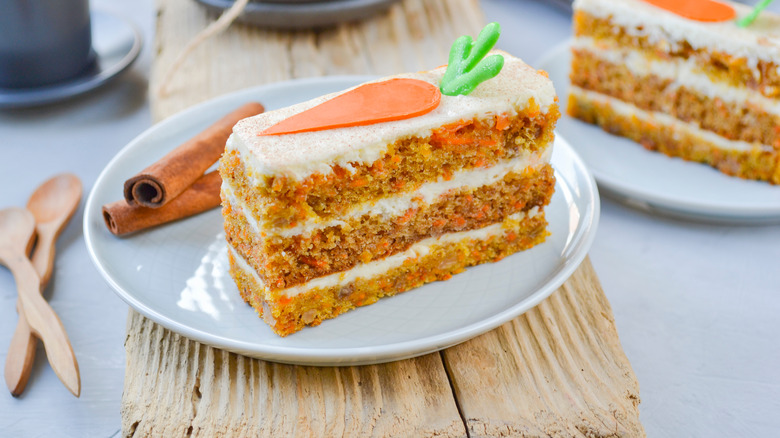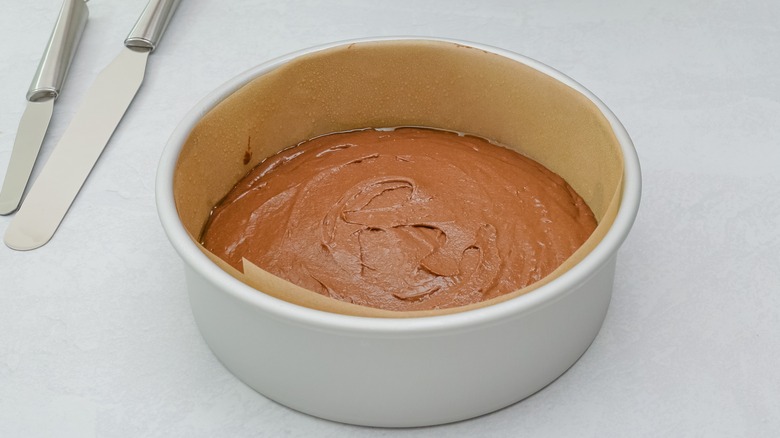The Mistake You Need To Avoid With Moist Layer Cakes
Moist layer cakes can be hard to work with. From maintaining an ideal texture while baking to assembling their layers, many factors have room for error before reaching a delicious outcome. Whether your layer cake has a large crumb or is packed densely, the one thing that all of these cakes have in common, like carrot cakes, German chocolate cakes, and this lovely lemon layer cake with basil and blueberries, is the high moisture content and heavy weight. For an easier time assembling and decorating, there is one key mistake you need to avoid: baking the batter in a deep baking pan.
Some people opt to bake the entirety of the cake batter in one deep pan, and then slice the cake into however many cross sections of layers they need. For moist cakes, this is actually a problem; since the batter is so heavy, it can have trouble rising and cooking evenly. The center may remain undercooked or the cake could collapse — two problems no baker wants to run into. Furthermore, imagine slicing a tall cake into two or three layers. The action of exposing open crumbs makes the cake more delicate, susceptible to falling apart, and difficult to frost. To eliminate these potential issues, it's much better to bake each of your cake's layers separately.
More precautions to ensure stable layers
The best way to achieve neat cake layers is to bake each one separately. This means distributing even portions of batter, whether in halves, thirds, or more, into separate pans to bake on their own. These thinner layers will bake and rise more evenly, and there will be no need to cut them apart to create more layers. If anything, you might need to take a thin slice off the top of the cake if it domes while it's cooking to create a flat surface for frosting.
It's equally important to let moist cake layers cool completely before you start working with them. The last thing you want is for your cake to fall apart when it's removed from the pan, which could happen if the cake is too warm. The easiest way to de-pan a cake is to line the bottom and sides of the pan with parchment paper before you pour in the batter. This prevents the cake from clinging to the metal. Even with parchment paper, wait for the cakes to cool completely before removing them from the pan. To do this, cover the top of the cake with a lightly damp paper towel, then place a tray over the top of the pan. Flip the cake upside down onto the tray, peel the parchment from the bottom, then re-flip it back to right-side-up. The paper towel should keep the soft top layer of the cake in place during the flip.

